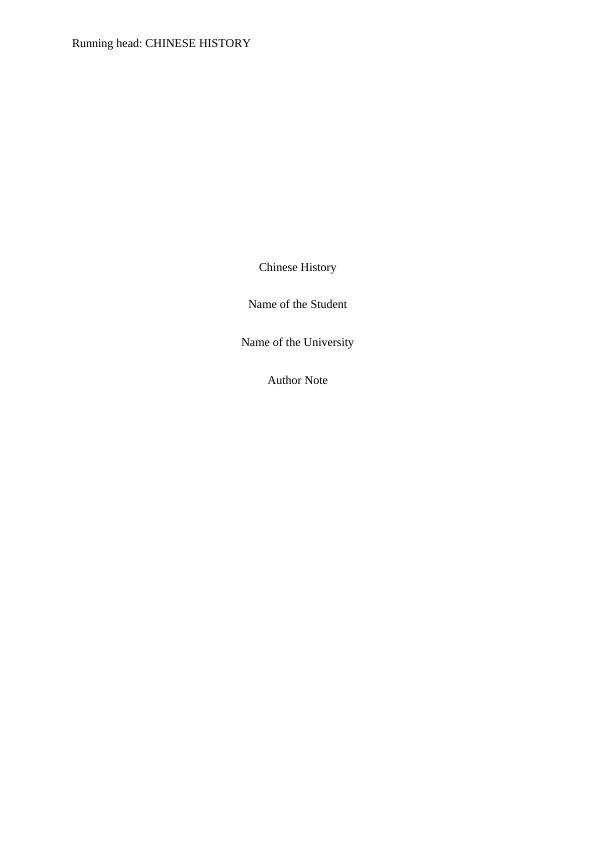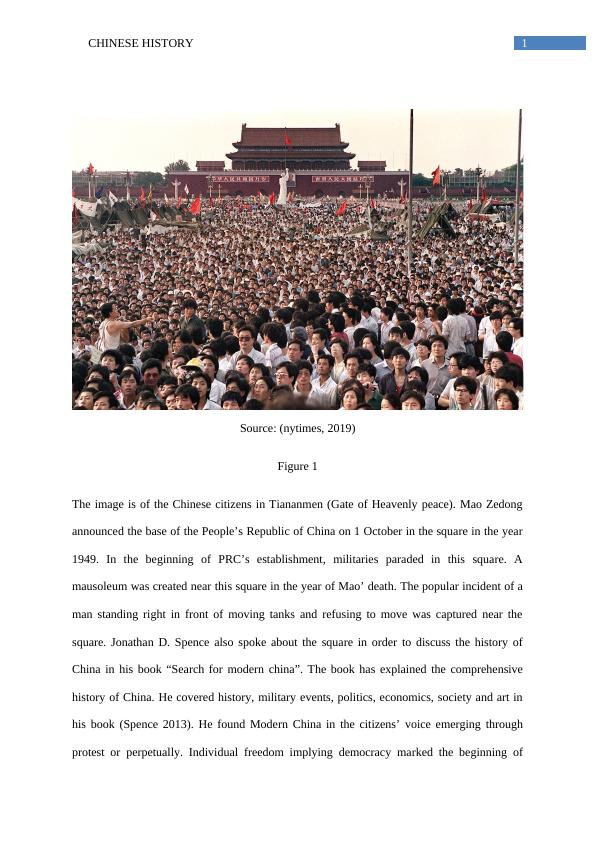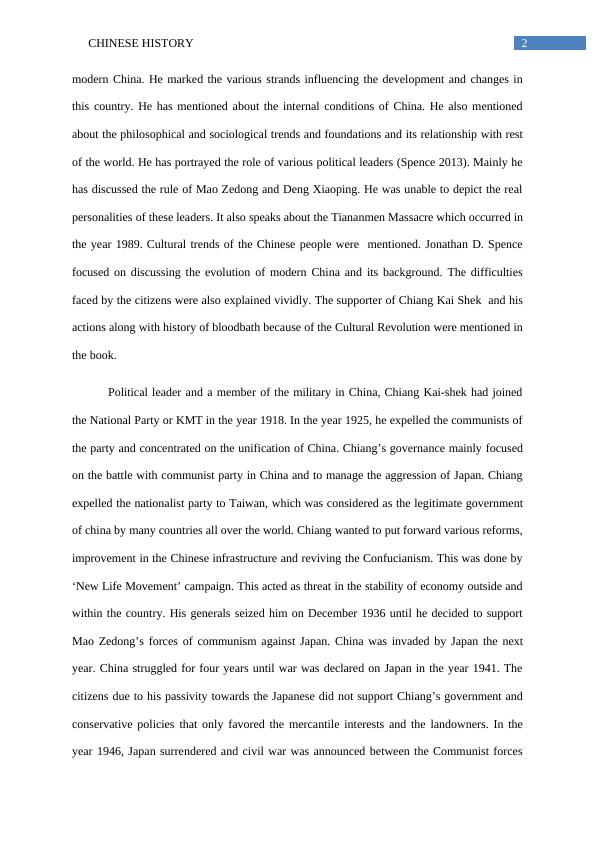Chinese History
7 Pages1820 Words98 Views
Added on 2022-12-26
About This Document
This article provides a comprehensive overview of Chinese history, covering various aspects such as politics, economics, society, and art. It discusses the rule of Mao Zedong, the Cultural Revolution, and the modernization of China. Study material and assignments on Chinese history are available at Desklib.
Chinese History
Added on 2022-12-26
ShareRelated Documents
End of preview
Want to access all the pages? Upload your documents or become a member.
Speech Analysis
|5
|1062
|385
Mao Zedong's Contribution to the Refurbishing of China: A Historical Analysis
|9
|2138
|293
The Role of Mao Dezong in the New Regime
|6
|1740
|120
Chinese History Assignment PDF
|12
|2690
|41
Trade War: Historical Context, Theories, and Complications
|10
|2684
|95



